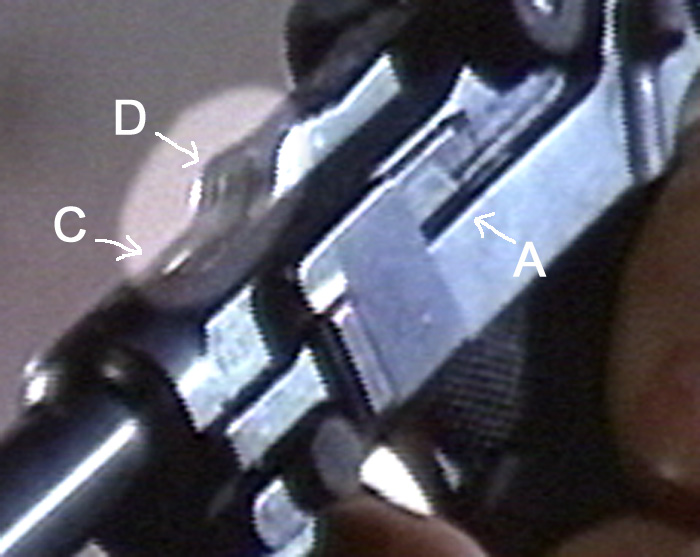</font><blockquote><font size="1" face="Verdana,Tahoma,Arial,Helvetica,Geneva">quote:</font><hr /><font size="2" face="Verdana,Tahoma,Arial,Helvetica,Geneva">Originally posted by ViggoG:
<strong>Dwight,
This is what I see.
A- Safety "Sear Block", "DOWN", Ready to Fire.
This is an "Old Model P-08 Sear" so #xx shows.
B- Safety Lever- - - - - - "UP" , Ready to Fire.
C- Extractor - - "UP" , Geladen , Ready to Fire.</strong></font><hr /></blockquote><font size="2" face="Verdana,Tahoma,Arial,Helvetica,Geneva">Viggo,
You made me make the empirical test.
Regarding "C", when a round is chambered the extractor rises 2mm above the top surface of the breechblock, and extends 1mm above the top of the receiver. It would be clearly prominent in the picture if it was loaded. In addition, at "D", the back of the extractor would be depressed into the breechblock, compressing its interior spring--this would be visible as well. (I've enhanced--brightened--the extractor area to make this a bit easier to see.)
At "A" you are right about the sear block being down, and being an "old model", un-relieved sear bar. That this is -not- a grip safety model (if I translated your original comment correctly) is demonstrated by the sear cut being angled forward, to match the forward-rake angle of the sear block. A grip-safety sear would be angled the opposite direction.
--Dwight
